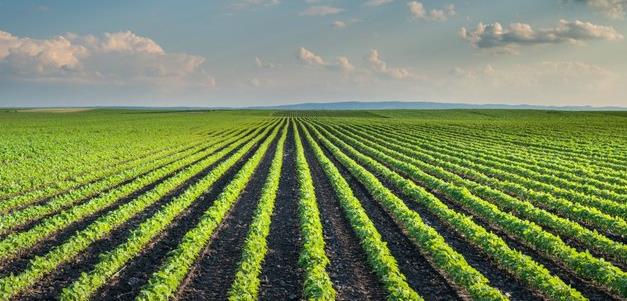USDA outlines aid program to farmers impacted by trade wars
by July 25, 2019 3:54 pm 835 views

U.S. farmers have been devastated by erratic weather patterns and an ongoing trade war with China, one of the largest U.S. agriculture importers in the world. The federal government is putting together an aid program to help farmers. U.S. Secretary of Agriculture Sonny Perdue announced Thursday (July 25) details of the $16 billion package aimed at supporting American agricultural producers while President Donald Trump’s administration continues to negotiate.
In May, Trump directed Secretary Perdue to craft a relief strategy in line with the estimated impacts of retaliatory tariffs on U.S. agricultural goods and other trade disruptions. The Market Facilitation Program (MFP), Food Purchase and Distribution Program (FPDP) and Agricultural Trade Promotion Program (ATP) will assist agricultural producers while President Trump works to address long-standing market access barriers.
“China and other nations have not played by the rules for a long time, and President Trump is the first President to stand up to them and send a clear message that the United States will no longer tolerate unfair trade practices,” Secretary Perdue said. “The details we announced today ensure farmers will not stand alone in facing unjustified retaliatory tariffs while President Trump continues working to solidify better and stronger trade deals around the globe.”
MFP signup at local FSA offices will begin Monday (July 29) and end December 6, 2019.
Payments will be made by the Farm Service Agency (FSA) under the authority of the Commodity Credit Corporation (CCC) Charter Act to producers of alfalfa hay, barley, canola, corn, crambe, dried beans, dry peas, extra-long staple cotton, flaxseed, lentils, long grain and medium grain rice, millet, mustard seed, oats, peanuts, rapeseed, rye, safflower, sesame seed, small and large chickpeas, sorghum, soybeans, sunflower seed, temperate japonica rice, triticale, upland cotton, and wheat. MFP assistance for those non-specialty crops is based on a single county payment rate multiplied by a farm’s total plantings of MFP-eligible crops in aggregate in 2019.
The per-acre payments are not dependent on which crops are planted in 2019. A producer’s total payment-eligible plantings cannot exceed total 2018 plantings. County payment rates range from $15 to $150 per acre, depending on the impact of unjustified trade retaliation in that county.
Dairy producers who were in business as of June 1, 2019, will receive a per hundredweight payment on production history, and hog producers will receive a payment based on the number of live hogs owned on a day selected by the producer between April 1 and May 15, 2019.
MFP payments will also be made to producers of almonds, cranberries, cultivated ginseng, fresh grapes, fresh sweet cherries, hazelnuts, macadamia nuts, pecans, pistachios, and walnuts. Each specialty crop will receive a payment based on 2019 acres of fruit or nut-bearing plants, or in the case of ginseng, based on harvested acres in 2019.
The acreage of non-specialty crops and cover crops must be planted by August 1, 2019, to be considered eligible for MFP payments.
The MFP rule and a related Notice of Funding Availability will be published in the Federal Register on July 29, 2019, when signup begins at local FSA offices. Per-acre non-specialty crop county payment rates, specialty crop payment rates, and livestock payment rates are all currently available on farmers.gov.
MFP payments will be made in up-to three tranches, with the second and third tranches evaluated as market conditions and trade opportunities dictate. If conditions warrant, the second and third tranches will be made in November and early January, respectively. The first tranche will be comprised of the higher of either 50% of a producer’s calculated payment or $15 per acre, which may reduce potential payments to be made in tranches two or three. USDA will begin making first tranche payments in mid-to-late August.
MFP payments are limited to a combined $250,000 for non-specialty crops per person or legal entity. MFP payments are also limited to a combined $250,000 for dairy and hog producers and a combined $250,000 for specialty crop producers. However, no applicant can receive more than $500,000. Eligible applicants must also have an average adjusted gross income (AGI) for tax years 2014, 2015, and 2016 of less than $900,000 or, 75% of the person’s or legal entity’s average AGI for tax years 2014, 2015, and 2016 must have been derived from farming and ranching. Applicants must also comply with the provisions of the Highly Erodible Land and Wetland Conservation regulations.
Many producers were affected by natural disasters this spring, such as flooding that kept them out of the field for extended periods of time. Producers who filed a prevented planting claim and planted an FSA-certified cover crop, with the potential to be harvested qualify for a $15 per acre payment. Acres that were never planted in 2019 are not eligible.
